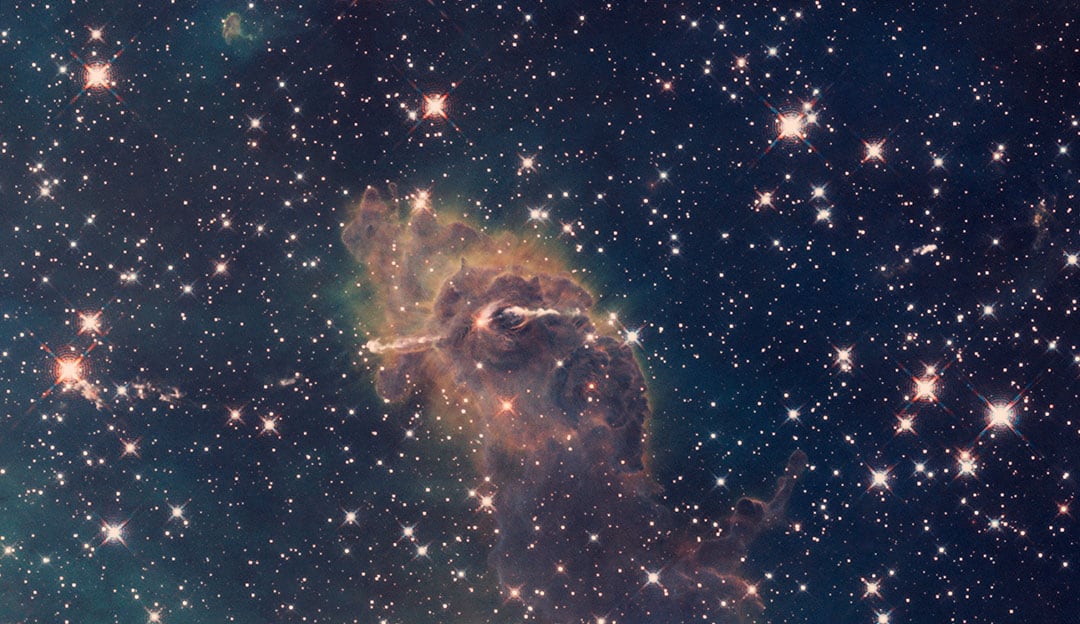On August 15, 1977, Jerry Ehman, an American astronomer searching for extraterrestrial intelligence, was looking through a printout of signals detected by the Big Ear radio telescope. He found a surprising 72-second-long signal, which was 30 times stronger than the usual background radiowave. Next to the sequence, he wrote “Wow!” giving the signal its official name.
Many have tried to explain its origin over the past 40 years, but no one has successfully done so. Part of the reason is because the Wow! signal was never observed again.
In his 2016 paper, Professor Antonio Paris of St. Petersburg College in Florida attempted to find an answer. He suspected that the source of the signal might be two recently discovered comets: 266P/Christensen and 335P/Gibbs. Both are surrounded by clouds of hydrogen, an element that naturally emits 1420 MHz — the same frequency detected from the Wow! signal.
Upon meticulous analysis of various astronomical databases, he discovered that the two comets were near the star group Chi Sagittarii in August 1977, where the Wow! signal was detected. He raised $20,000 on GoFundMe to buy a radio telescope to witness the passage of 266P/Christensen through this zone in January 2017. Paris plans to observe the 335P/Gibbs’ passage in January 2018. His observation of the former led him to conclude that both comets were, indeed, the source of the signal.
Yvette Cendes, a guest PhD student in Astronomy at U of T, strongly disagreed with Paris’ findings. In a Reddit post, Cendes expressed doubts about the journal in which his first and second papers were published.
“It does raise a bit of an eyebrow that this paper was published in a journal that has no real experience publishing radio astronomy papers that I’ve seen beyond these two (so, a good chance the referee likely was not an expert),” she wrote.
Paris’ paper detailed that the comets displayed changes of +7 dB and -11 dB when drifting into and out of a large-scale structure of a radio galaxy known as a “lobe”. This would mean that they were 10–100 million times more active than the comet with the brightest signal detected recently, the Hale-Bopp Comet.
Cendes goes on to say that, assuming these frequency changes are accurate, the paper still fails to explain why such brightness is likely to have occurred. She suggests that this might be an error due to the presence of the comets 20 degrees away from the sun, the brightest radio source in the sky.
The apparent vagueness of Paris’ procedure and some mistakes Cendes found in the paper continued to raise doubts. Not only did Paris use decibels to measure signal strength rather than the Jansky units common in radio astronomy, but information about the location of his experiment and the type of dish used to construct his radio telescope were also left unmentioned.
According to Cendes, since he failed to prove that no other factor could have caused the same results, Paris’ explanation remains a hypothesis. “Any potential explanation is still a hypothesis unless you can demonstrate that your explanation is plausible, and that there [are] no other such events that could be seen. This hypothesis is terrible in this regard,” Cendes said.
Cendes believes that the Wow! signal is as likely to be the result of comets as it is extraterrestrial activity or an absurdly-reflected manmade signal.
Other astronomers, including Ehman, the discoverer of the Wow! signal, have also expressed doubts about the validity of Paris’ theory.
When asked for comment by The Varsity, Professor Paris declined to comment on Cendes’ post, stating that he “cannot respond to a student’s conjecture.” Cendes did not respond to comment requests from The Varsity.


